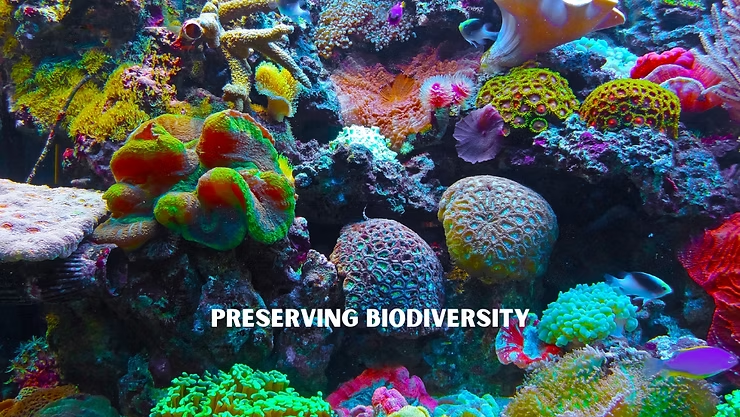Overview
The ocean is home to an incredible variety of life, from the tiniest microorganisms to large marine mammals. This biodiversity keeps ecosystems balanced and resilient, ensuring the ocean continues to support both nature and humanity. Without it, marine environments would lose their richness and vitality.
What is Biodiversity?
Biodiversity refers to the variety of life forms, including plants, animals, and microorganisms, within an ecosystem. A coral reef, for example, thrives with fish, turtles, and colorful corals interacting in harmony. This diversity is essential for maintaining ecosystem stability and adapting to environmental changes.
The Importance of Biodiversity in the Ocean
Biodiversity supports healthy ecosystems that provide humans with food, medicine, and recreation. Every species plays a unique role, from corals providing shelter to fish maintaining food chains. Protecting this balance ensures oceans continue to serve both ecological and human needs.
Threats to Biodiversity
Ocean biodiversity faces numerous challenges that endanger marine life and ecosystems:
- Overfishing – depletes fish populations and disrupts food webs
- Habitat Destruction – damages coral reefs and seagrass beds crucial for marine species
- Pollution – plastic waste and chemicals harm marine organisms
- Climate Change – rising temperatures and acidification threaten species survival
Addressing these threats is vital to protecting ocean life and ensuring future sustainability.
Conservation Efforts
Marine Protected Areas
Marine Protected Areas (MPAs) safeguard habitats like reefs and seagrass beds, providing species with safe zones to thrive. By limiting human activities such as overfishing and unregulated tourism, MPAs preserve biodiversity and maintain ocean health.
Sustainable Fishing Practices
Responsible fishing methods, including catch limits and selective gear, help maintain fish stocks and protect vulnerable species. Supporting sustainable seafood ensures long-term ecosystem balance and food security.
Reducing Pollution
Pollution reduction is essential to protect marine life. Measures include stricter industrial regulations, waste management improvements, and public awareness campaigns encouraging eco-friendly choices such as reducing single-use plastics.
Benefits of Preserving Biodiversity
Economic Benefits
Healthy ecosystems sustain tourism, fisheries, and biotechnology. From scuba diving attractions to pharmaceuticals derived from marine organisms, biodiversity drives both local and global economies.
Ecological Benefits
Biodiversity maintains water quality, nutrient cycling, and carbon storage. Habitats such as coral reefs, mangroves, and seagrass beds act as nurseries for marine species and increase ecosystem resilience.
Cultural Benefits
The ocean inspires art, traditions, and community identity. Recreational activities like diving and boating also connect people with marine life while supporting cultural heritage and tourism.
Conclusion
Taking Action to Save the Ocean
Protecting the ocean begins with small, everyday actions. Reducing plastic use, supporting sustainable seafood, and participating in conservation initiatives make a difference. Collaboration among governments, organizations, and communities is crucial for lasting impact.
Individual Responsibility
Each individual can contribute by adopting sustainable habits and joining efforts such as beach clean-ups. Small actions, when multiplied, create powerful change for marine ecosystems and their biodiversity.
Save Our Blue Ocean advocates for marine conservation through awareness and action. By choosing eco-conscious products like ocean-themed bracelets, individuals can support preservation efforts while spreading the message of protecting our planet’s most precious resource.

